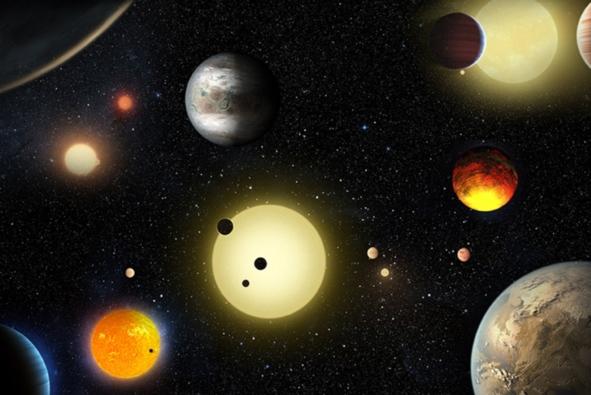NASA Announces Discovery of Over 1000 New Planets

May 18, 2016
NASA along with their Kepler telescope discovered 1,284 new planets, and some of these may be inhabitable by either humans or possibly other life forms. NASA has been using the Kepler telescope to observe over 150,000 stars just in one section of the sky and to notice dimming of the stars to indicate a possible planet passing in front of them.
Of the total 4,302 potential planets being watched only 1,284 of the possible planets passed the minimum possibility of being a planet at 99 percent, 707 turn out to most likely be a astrophysical phenomena, and the remaining 1,327 possible planets that do not meet the 99 percent, but are not yet declined as planets will require further study.
The Kepler mission was launched from Cape Canaveral, Florida on March sixth at approximately 7:50 pm in 2009. The spacecraft was scheduled for a three and a half year orbit in which it discovered the most planets in one trip. The number of planets announced at one time was more than doubled with the 1,284 planets which is extremely important because it shows how efficient and successful the Kepler mission turned out to be, at this rate NASA will be able to uncover the mysteries of space at an unbelievable pace.
Whether or not these planets are actually habitable is not yet known and will require NASA to do further research before sending anyone there. “These planets don’t really seem safe in my opinion, because even though we discovered them and they seem habitable it doesn’t mean they are actually safe for us to live there. I think NASA needs to do more research before we physically send people there, however it is good that we are finding some other planets we could live on in case Earth’s atmosphere gets too dangerous,” said Wayne Hills junior, Allison Duffy. Finding other life would be a huge milestone, so it will certainly be interesting to see what else NASA discovers.





